Redesigning FDA’s Nutrition Facts Label
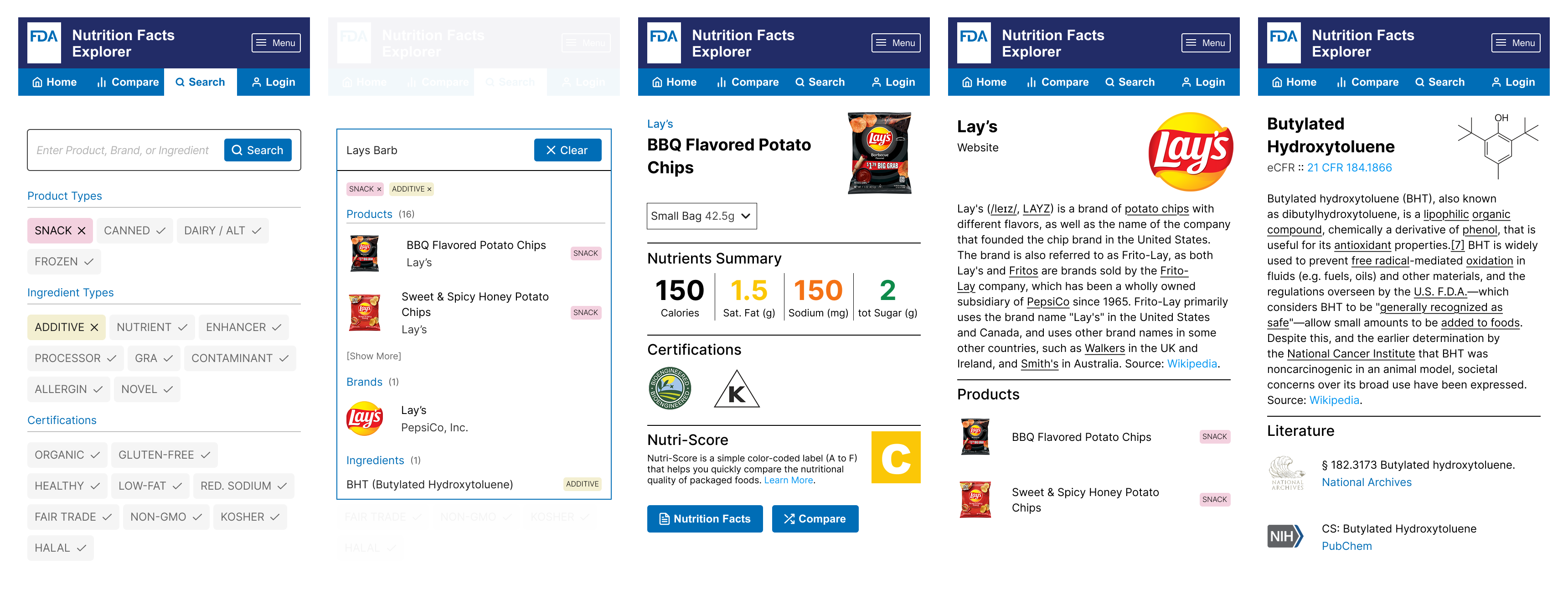
Introduction
Nutrition Facts labels are the U.S. Food and Drug Administration's most ubiquitous tool for disseminating information about the products Americans consume every day. They are printed on almost every consumable product in the country, with the stated purpose of empowering Americans to make healthier dietary choices. For my final project in my NYU class on User Experience, I conducted research and designed a solution that would extend the dissemination of nutrition facts, with the goal of making the most important dietary information more accessible.
The Problem
The U.S. faces an ever-growing epidemic of preventable diet-related chronic diseases such as cardiovascular disease, diabetes, and obesity. Racial and ethnic minority groups, those with lower socioeconomic status, those living in rural areas, and other underserved communities disproportionately experience these diet-related chronic diseases. Improving nutrition is one of the most effective public health interventions for reducing these and other chronic illnesses and premature death.
Food and Drug Administration, 2025.
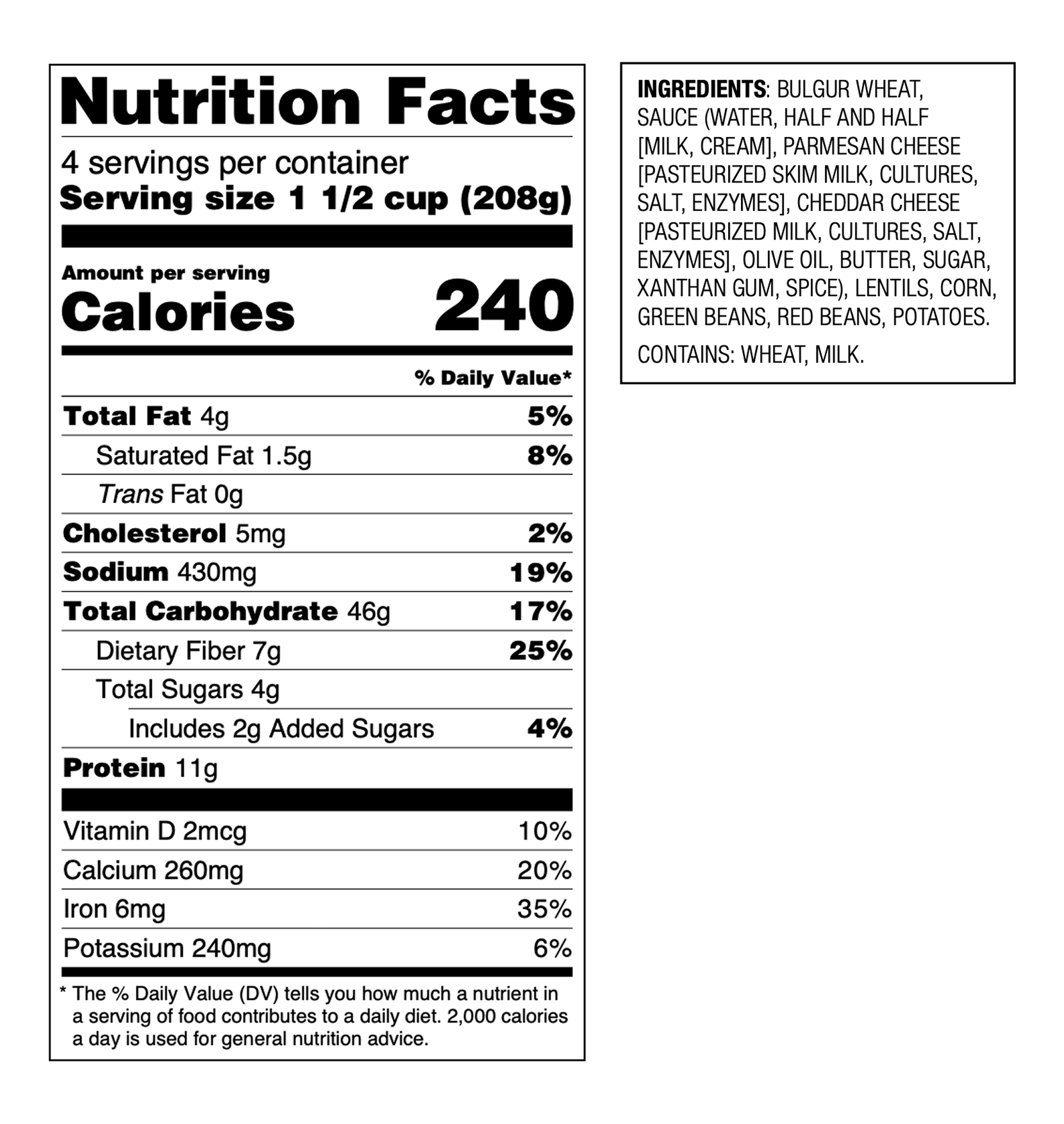 The current design by the FDA, as of 2016.
The current design by the FDA, as of 2016.
The Goal
I want to improve the legibility of these labels, and provide a knowledge base where consumers can learn about nutrition, compare products and ingredients, and get notified about potentially harmful foods. Understanding the information already provided by the FDA will empower individuals from all walks of life to make better dietary choices for themselves and their families.
Research Plan
To achieve this, I've outlined a comprehensive research structure:
- Understanding the Foundation: I will understand what current FDA labels measure and why that information is important for consumers.
- Expert Insights: What do nutritionists and health experts outside of the government recommend for the average consumer? My focus will be on long-standing evidence for healthy eating rather than new or trendy science.
- Gathering User Perspectives (Qualitative): I will conduct as many in-person interviews as possible. I will get ideas from friends and family about how FDA labels could be redesigned given the recommendations of health experts about healthy eating habits.
- Quantifying User Behavior (Quantitative): I will conduct a short online survey with the following yes/no-able questions:
- How old are you?
- When judging the quality of a food item before purchase, do you refer to the Nutrition Facts label on the back?
- How often, if at all, do you use the Nutrition Facts label?
- Which parts of the Nutrition Facts label, if any, do you regularly use? Check all that apply.
- Which parts of the Nutrition Facts label, if any, are confusing or hard to understand? Check all that apply.
The Solution
Insert photo of Nutri-Score. Caption: Nutri-Score originated in the European Union as a front-of-pack nutrition label that converts the nutritional value of products into a simplified score, often represented by a letter and color, to help consumers quickly assess food quality.
a) An Expanded Nutrition Facts Label -- Interviewees expressed interest in a holistic product grade, which would provide consumers of all ages and languages a reference point for what kinds of foods the FDA wants to discourage. A product grade would also create an incentive for companies to produce foods that contain fewer harmful sugars, fats, additives, and contaminants. For my label redesign, I incorporated Nutri-Score as a grading solution, as well as color-coded indicators for certain nutrients to help consumers understand the reasoning for a product's grade.
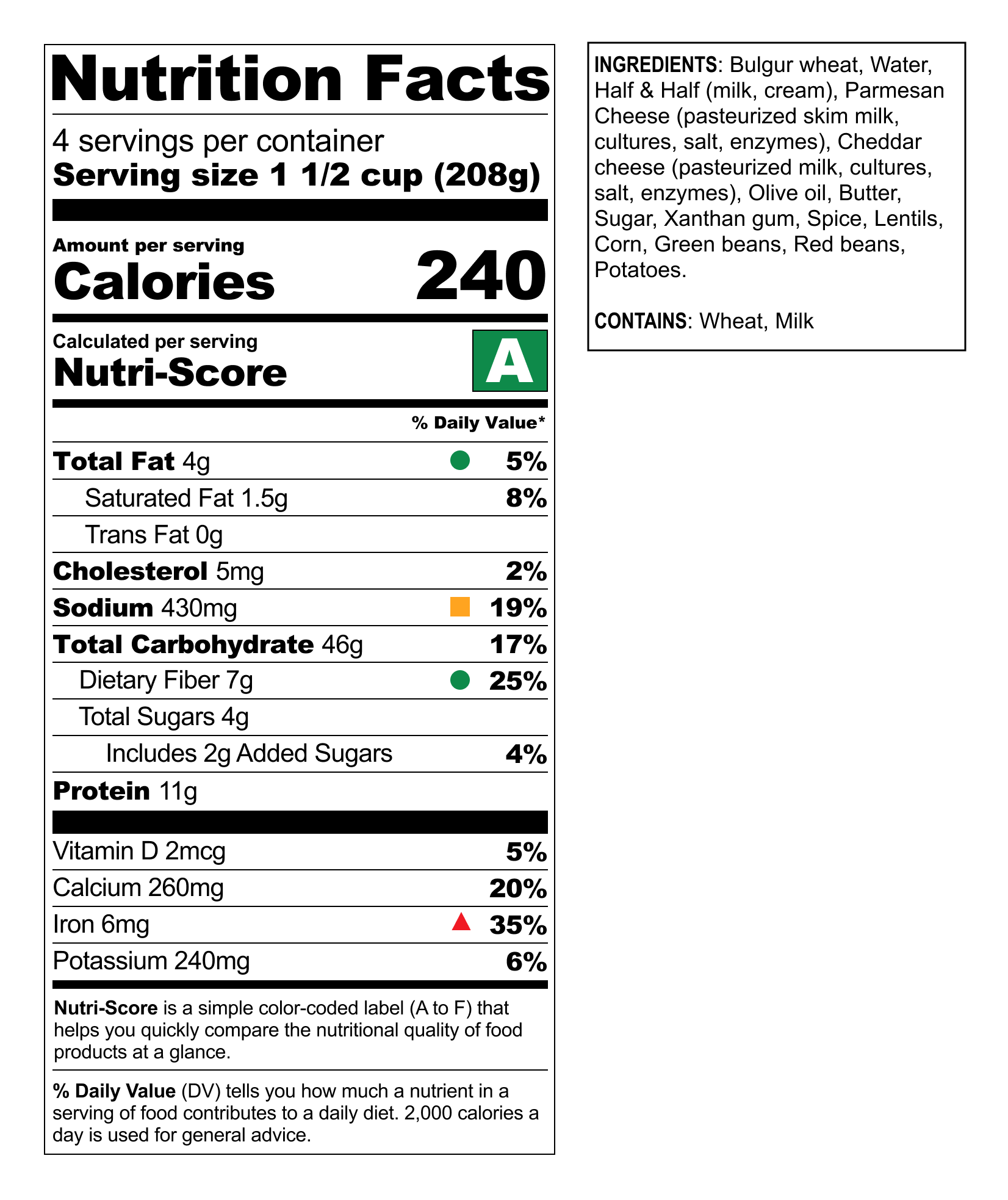
b) A Digital Tool for Understanding Nutrition Facts -- A digital platform for detailed nutritional information is not unheard-of. In fact, SmartLabel, a company in the private sector, has partnered with approximately 80 companies to provide more information about their food products than can fit on a traditional physical label. My impression is that a solution like this for Nutrition Facts is long overdue. The FDA likely already stores nutritional information about nearly every product sold in the U.S., so why not make that information digitally available to open up opportunities for extended informational tooling? My design imagines a web application that provides access to the FDA's product database right on their website, with search, filtering, and comparison features.
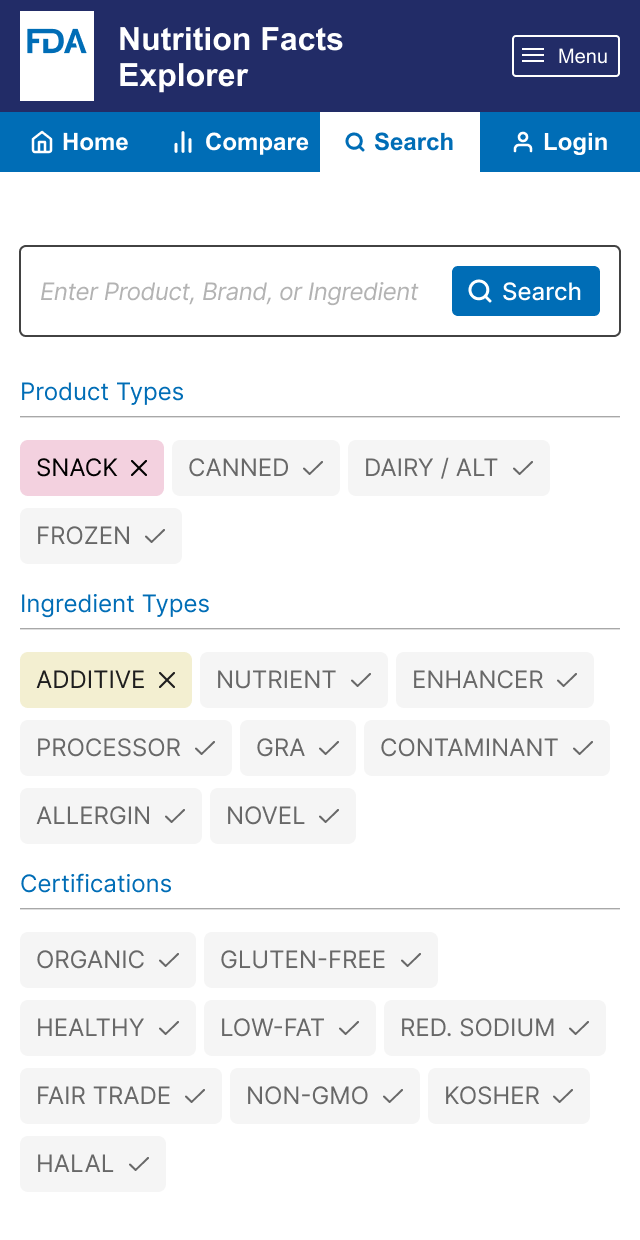
Filter by product type, ingredient type, or certification. Filters appear as "tags". Any item in the database can have multiple tags.
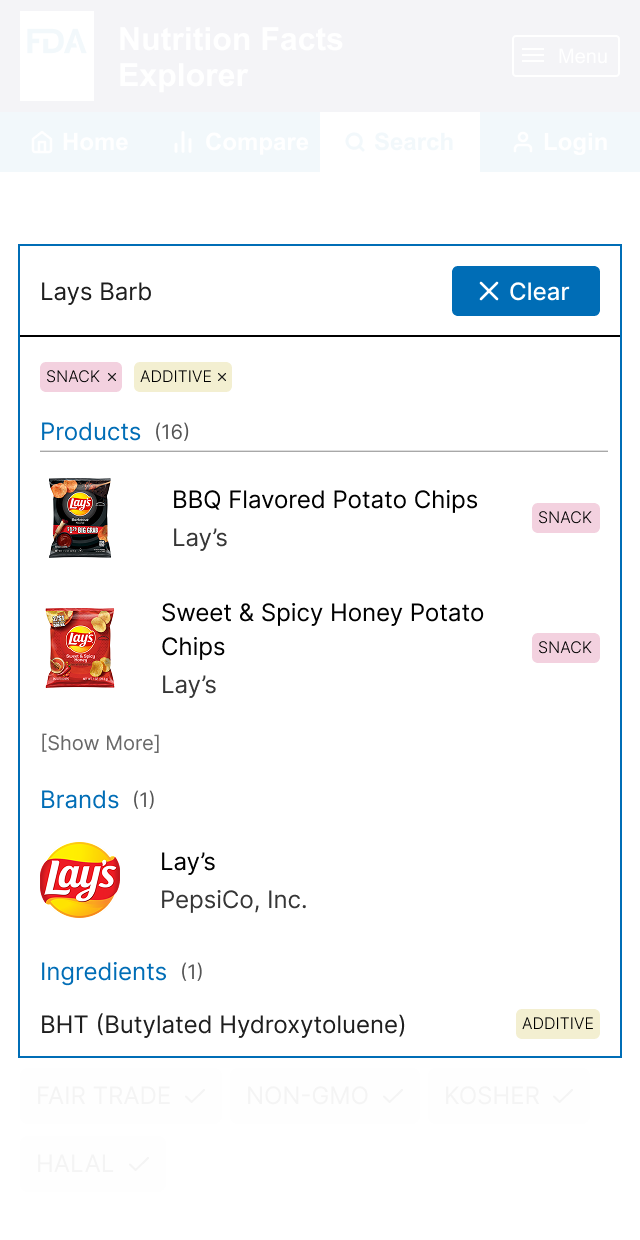
Search the FDA's database for a food product, brand, or ingredient. Search results begin to appear as you type. All three categories will populate with the most relevant match. Added tags appear above search results and can be removed on the fly.

Product Pages contain a nutrient summary, certifications, and the product's Nutri-score. Instead of a fixed "serving size," the Nutrition Facts, summary, and score can be recalculated based on the selected item size. Nutrient colors indicate their health impacts.
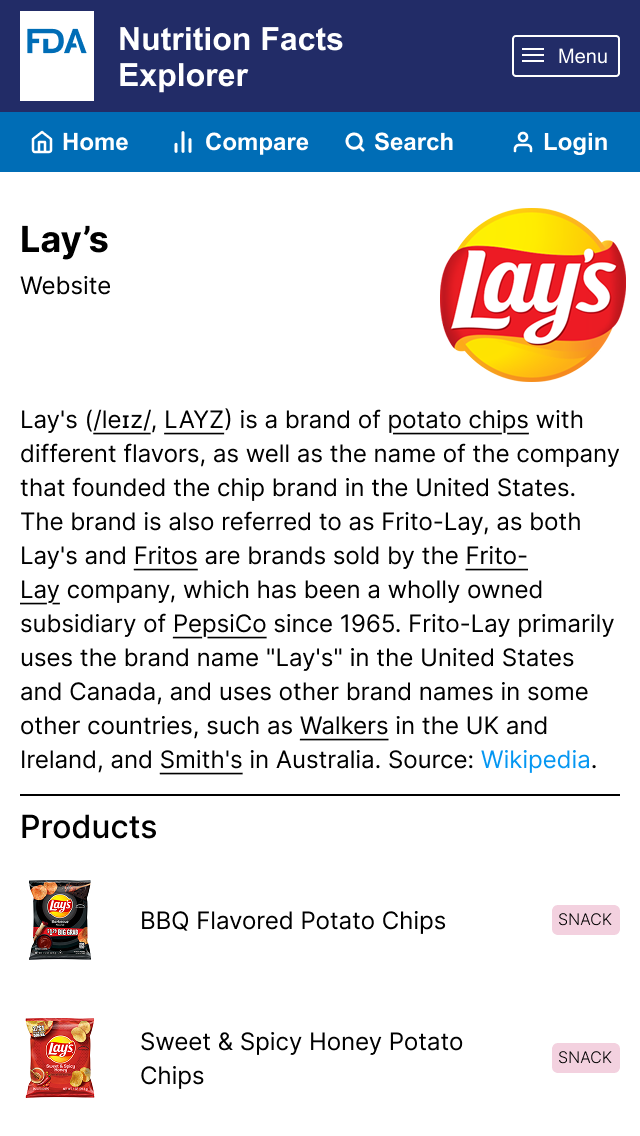
Brand Pages contain a summary of the brand, a logo, relevant links, and a list of products.
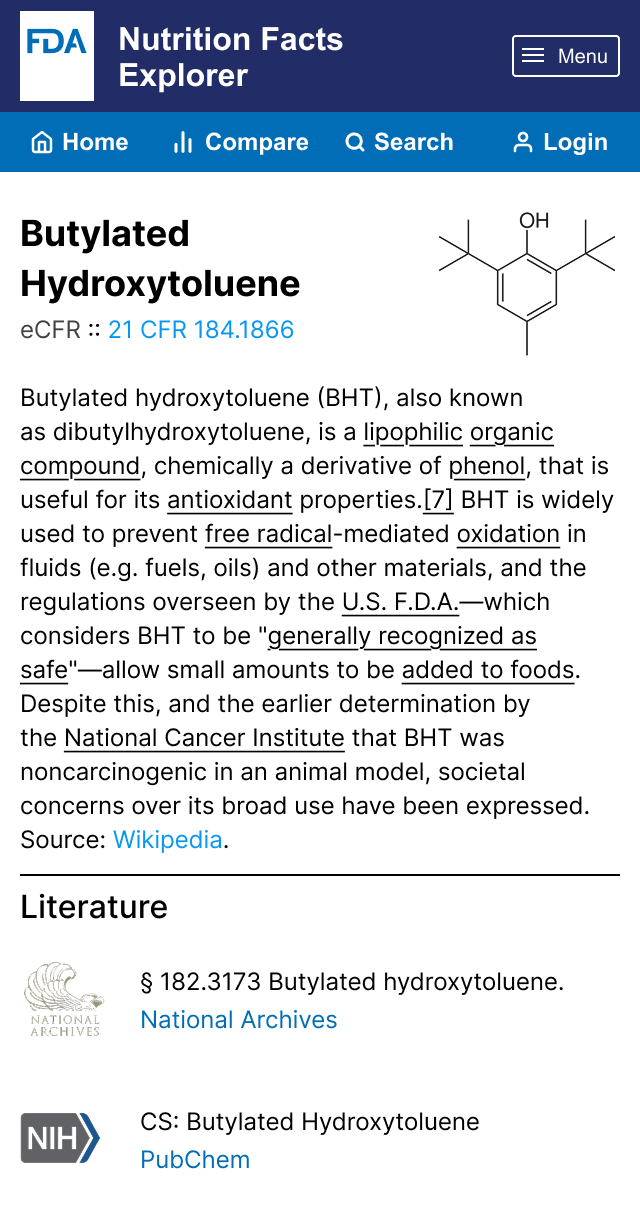
Ingredients Pages contain a summary of the ingredient, a link to the ingredients page on the National Archives database, and links to papers, studies, or any other relevant literature.
Thank you for reading!
This redesign is more than just a cosmetic update; it's a strategic effort to reduce decision fatigue, promote healthier eating habits, and increase transparency. By making essential nutrition information more digestible and actionable, I believe this new label design and web app can genuinely help consumers navigate the complexities of food choices with greater confidence.
This project has been an incredibly rewarding journey, from identifying a significant public health challenge to designing a tangible solution. I'm excited about the potential for a more intuitive and empowering nutrition facts experience.